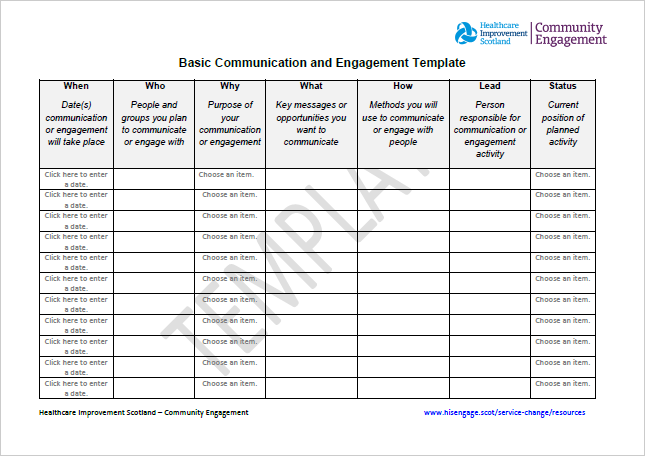A communication and engagement plan describes who you need to engage with as part of your work and how and when you will do this.
A robust communication and engagement plan will help you to:
- identify who to engage with, how best to do it, when and what to say to communities
- anticipate any difficulties people might face that could stop them taking part, such as social distancing measures or internet access if engaging digitally
- think about what you will do with the feedback you receive from the engagement
A plan allows you to share, discuss and agree the communication and engagement approach, especially with the affected communities, and work together to overcome any barriers for participation.
When developing your communication and engagement plan, think about:
- how and when communication or engagement will take place, with practical considerations such as school holidays or availability of appropriate locations and staff
- what methods may be best to use
- how inclusive the communication and engagement activity is
- how people's feedback will be used to inform decisions
A communication and engagement plan does not have to be complicated or technical. It should be in an easy-to-read format that can be shared with communities for feedback.
Communications and engagement plans should:
- be developed with patients, carers and potentially affected people, at the start when considering changes to services
- provide a clear timeline of planned communication and engagement activity throughout the different stages of the service change
- be reviewed regularly during the engagement process to ensure they are robust, inclusive and consider different (and changing) needs of individuals and groups
- provide opportunities to learn and improve future communication and engagement activities for service change

